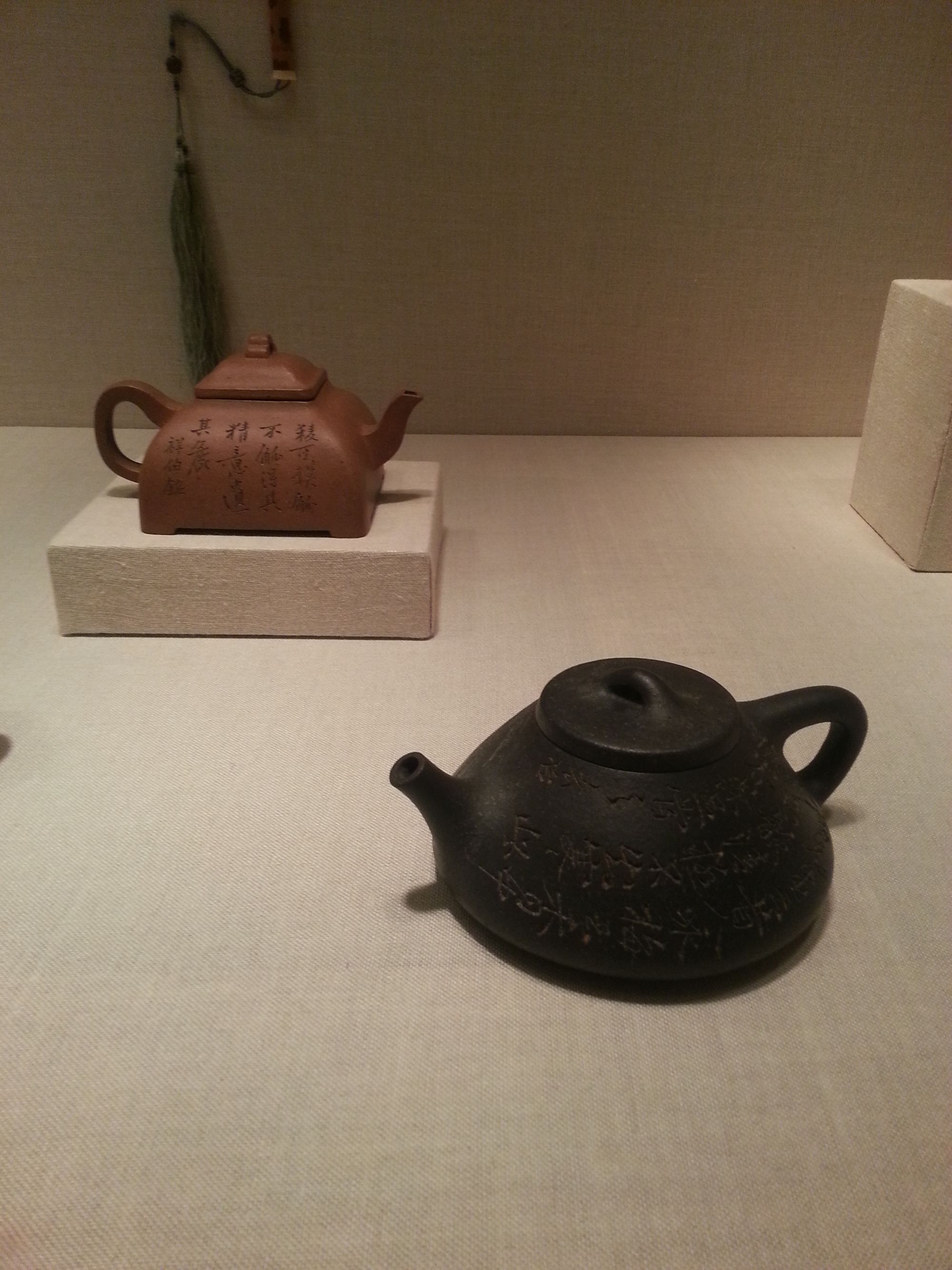Basic Verification of Yixing Teapots
NOTE: this post is out of date. Those Interested in Yixing Teapots are suggested to read An Introduction to the Art & Science of Chinese Tea Ceremony: Yixing Teapots – Knowledge, Connoisseurship, and Technique

Yixing teapots have been in nearly continuous production (wars being the primary cause of discontinuity) since the late-Ming or Early Qing dynasty.
The increase in price and rarity of real Yixings of known provenance has caused a ripe market for fakes – often an expensive mistake for new and experienced practitioners alike. Simple fakes are often made from clay other than Yixing, and are not particularly hard to identify.
The better “fakes” can be real Yixing – but from the wrong year or maker. Most Yixing teapots were made by students and apprentices of masters, who learned to make teapots by copying the designs of the masters before them. Masters from previous dynasties would have both later masters and their students copying their designs – “fakes” existed as early as the Qing Dynasty, with potters copying master made pots from the Ming Dynasty. Students and apprentices copied their masters’ designs using the same tools, clay, and kiln. Thus, most master made pots would have been copied at least 10 times by students in training, using identical clay and equipment.
Are all of these teapots fakes? No – that would be a poor definition of “fake”…. Do Yixings need to be master made to be real? No – they simply need to improve the tea you decide to pair with it to be used within GongFu.
Thus, even if one knows how to determine the composition of the clay (Yixing vs. not Yixing) by hand or through an analytical test, determining the age and provenance is still a challenge (for example, you can’t use radio-carbon dating on clay….).
A practitioner of tea who wishes to purchase Yixing for GongFu must learn a set of methods to separate real from fake. This first post will explain.
Basic Signs of a Fake Yixing
With very few exceptions, all Yixing teapots are hand built as Yixing clay is too crumbly and dry to turn on a wheel. Wheel throwing will leave a slight circular pattern on either the inside or outside of the pot.
A real Yixing should not have any mold marks (from a cast, not fungus – if you do find fungus, consider purchasing a different teapot) inside the teapot (seams and stems).
There should be no stress marks around edges from a slurry mold; these stress marks can be seen when the teapot has a corner or a slighter curve, and the slurry didn’t fill the cast all the way, causing stretching while the clay was shrinking. These stress marks appear as small sets of lines oriented perpendicular to the direction of stretch.
Skin of a Yixing
Yixing doesn’t start bright and shiny – it develops its patina over time due to organic material (tannins) from the tea getting caught in the pores and interacting with the iron in the clay to create an illustrious surface. These pores are within the clay, which means that you should not be able to rub the patina off (easily), and the skin of the pot should not be greasy or streaked. The patina should not flow or change when hot water is poured over the teapot (such as when you LingHu).
The skin of a Yixing should be smooth, but not glossy. The inside of a Yixing should not be perfect and smooth; there should be scrapes and visible hand casting marks on the inside.
There are few “effects” that can be seen on the skin of a Yixing, such as “pear skin” – a fruit skin-like appearance with slightly raised “veins” – this is nearly exclusively seen in real ZhuNi clay. This effect should not be confused with artistic veins added to Yixings shaped like organic logs, fruits, or gourds,
A real Yixing should be the same color throughout the clay (inside the lid whole, inside the spout) – color variations are the sign of uneven firing, addition of coloring agents, and sometimes paint or glaze.
Considerations
The effect that any given teapot has on your tea is far more important than who made it, the type of clay or the exact firing temperature. These details help you understand the why – but you must practice the how.
Please don’t read this overly simple post and purchase an expensive teapot. The individuals making fake Yixings and the vendors selling fake Yixings are very good at what they do – practice your identification skills with a teacher before making big purchases.